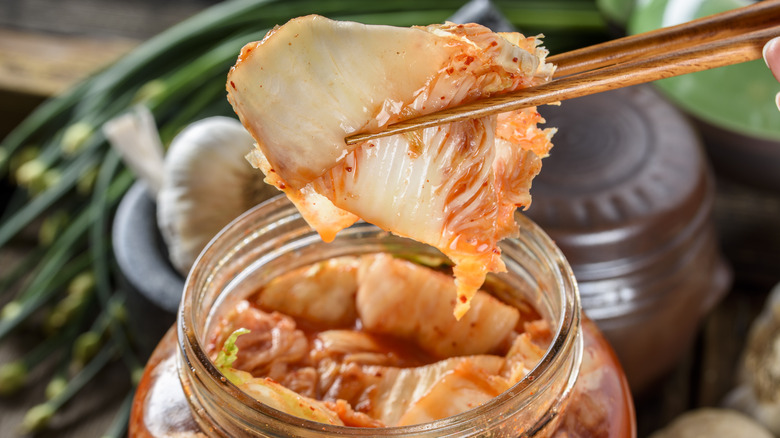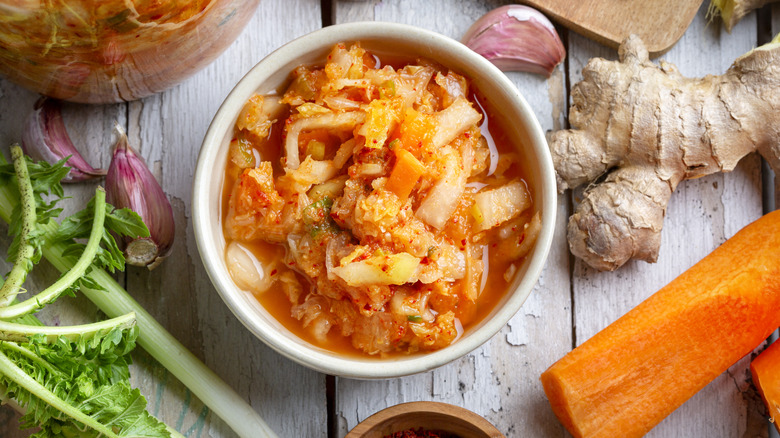Don't Go Overboard With These 2 Ingredients When Making Kimchi
You might be the type who loves to add an extra punch to every recipe. Garlic bread, pasta, stews — everything tastes better with more garlic, right? Not quite, because when it comes to making homemade kimchi, more garlic is not always better. Unlike other dishes where an additional clove or two won't make much difference, kimchi requires a balance.
Overloading garlic in kimchi can result in unwanted bitterness. This stark deviation from the traditional tangy, spicy profile can make or break your kimchi experience. The bitterness can also mask the other beautiful, intricate flavors of kimchi, which may include fruits like apples or pears and other umami components like anchovies or shrimp.
Ginger is another ingredient you don't want to overload your kimchi. While warm and spicy, ginger, with its natural sugars and starches, presents an unexpected challenge: Use too much, and you might end up with overly sticky kimchi, which makes it undesirable.
The perfect amount of garlic and ginger when crafting homemade kimchi
So, what's the solution for your garlic and ginger kimchi dilemma? We recommend adding three to four cloves of minced garlic for a standard batch of kimchi with about a head of napa cabbage or about 1 pound of Korean radish. This ensures that the dish remains free from any bitter undertones. As for ginger, a thumb-sized piece is just right, preventing any undue stickiness post-fermentation. Kimchi thrives as a harmonious blend; thus, the aromatics shouldn't dominate.
Depending on individual tastes, other kimchi components might be seafood, like pollocks or fish sauce, chili flakes, and even certain fruits and other vegetables like carrots. Each component plays its unique role, but the fermentation journey binds them all, transforming these individual notes into the rich chorus of flavorful kimchi.
Whether served alongside grilled meats during Korean barbecue, folded into a warm rice bowl, or enjoyed straight from the jar as a spicy snack, kimchi offers versatile and vibrant flavor. Its layered tastes, packed with umami and textures, are a reminder of the meticulous preparation and patience that goes into making it.

